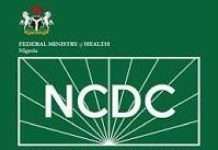– Canvasses Malaria Diagnosis by RDTs before administering antimalarials

A public health physician, Dr Charles Guissou, has raised concerns over the high prevalence of malaria and dengue misdiagnoses in Africa, saying this has significantly contributed to antimicrobial misuse and the emergence of antimalarial resistance in the region. He expressed particular concern about the mismanagement of patients by healthcare workers, warning that more patients could suffer if this trend is not addressed.
Guissou, a co-principal investigator for Target Malaria Burkina Faso (Institut de Recherche en Sciences de la Santé), emphasised the importance of adhering to the World Health Organisation’s (WHO) recommended standards for malaria diagnosis, either by microscopy or rapid diagnostic tests (RDTs), before prescribing antimalarial drugs to patients. He believes this approach would significantly reduce cases of malaria and dengue misdiagnosis in Africa.
Citing findings from a recent study titled “Increasing Prevalence of Malaria and Acute Dengue Virus Coinfection in Africa,” he noted that 22,803 patients with acute undifferentiated febrile illnesses from 10 African countries were sampled. The study showed a pooled prevalence of malaria and dengue coinfection of 4.2 per cent, with Central Africa having the highest rate at 4.7 per cent, followed by East Africa at 2.7 per cent and West Africa at 1.6 per cent.
Speaking to Pharmanews in an online interview, the scientist attributed the major cause of misdiagnosis to the similarities in the pathogens causing the two diseases—Anopheles mosquitoes for malaria and Aedes mosquitoes for dengue. He noted, however, that they are two distinct diseases, often confused by both medical personnel and the general public. To mitigate this misdiagnosis, which has exacerbated morbidity and mortality in the region, he advocated strict adherence to clinical diagnostic protocols for all cases of fever.
“Both malaria and dengue are transmitted by female mosquitoes and cause severe illness in humans. Due to some similarities between the two diseases and the mosquito species, they are often confused by patients and medical personnel.
“Clinical misdiagnosis often leads to the overuse or misuse of antimicrobials, which can accelerate the emergence and spread of antimicrobial drug resistance. It also results in mismanagement of patients and dengue outbreaks.
“At Target Malaria, we are committed to contributing to a malaria-free Africa. We also aim to educate as many people as possible about the differences between the Anopheles mosquito, which transmits malaria, and the Aedes mosquito, which carries the dengue virus. Malaria and dengue should be distinguished from each other so that adequate prevention and treatment measures can be implemented,” he stated.
Beyond the similarities in the causative agents of the two infections, the malaria researcher highlighted other factors contributing to the misdiagnosis of malaria and dengue. These include the institutionalisation of malaria as the primary febrile illness in the region by international development organisations and national malaria control programmes, limited access to medical care and laboratory diagnostic facilities, a lack of awareness among healthcare workers regarding non-malarial febrile illnesses, and the overlap of signs and symptoms between dengue and malaria.
He therefore advocated further training for medical personnel on the distinctions between the two conditions, noting that this would enhance their ability to consider both malaria and dengue when faced with a clinical presentation of fever.
The public health physician identified malaria, dengue, and yellow fever as the major mosquito-borne diseases. He noted that the global community records 200 million malaria cases and 600,000 deaths annually, with African children and pregnant women accounting for most of these fatalities. Meanwhile, dengue fever has seen a dramatic rise, with cases increasing by six million from 2000 to 2023, exacerbated by the effects of climate change on public health.
To assist health workers in distinguishing between the two infections, he explained that dengue is caused by four closely related viruses—DEN-1, DEN-2, DEN-3, and DEN-4. In contrast, malaria is caused by five Plasmodium parasite species, with P. falciparum and P. vivax posing the greatest threat. He emphasised that P. falciparum is the deadliest malaria parasite and the most prevalent in Africa.
Guissou listed the symptoms of dengue fever as high fever, headache, body aches, nausea, and rash, affecting infants, young children, and adults. He stressed that dengue often requires hospitalisation, with recovery typically taking one to two weeks. In contrast, malaria symptoms begin within 10–15 days of being bitten by an infected mosquito, ranging from mild to life-threatening, including fever, chills, headache, fatigue, confusion, seizures, and difficulty breathing.
For treatment, Dr Guissou noted that while there is no specific treatment for dengue, appropriate medical care can frequently save the lives of patients with severe dengue. Early detection and proper medical care can reduce fatality rates to below one per cent. In contrast, malaria has treatment options, with antimalarial drugs being administered after confirmation of the disease through WHO-recommended parasite-based diagnostic testing.










